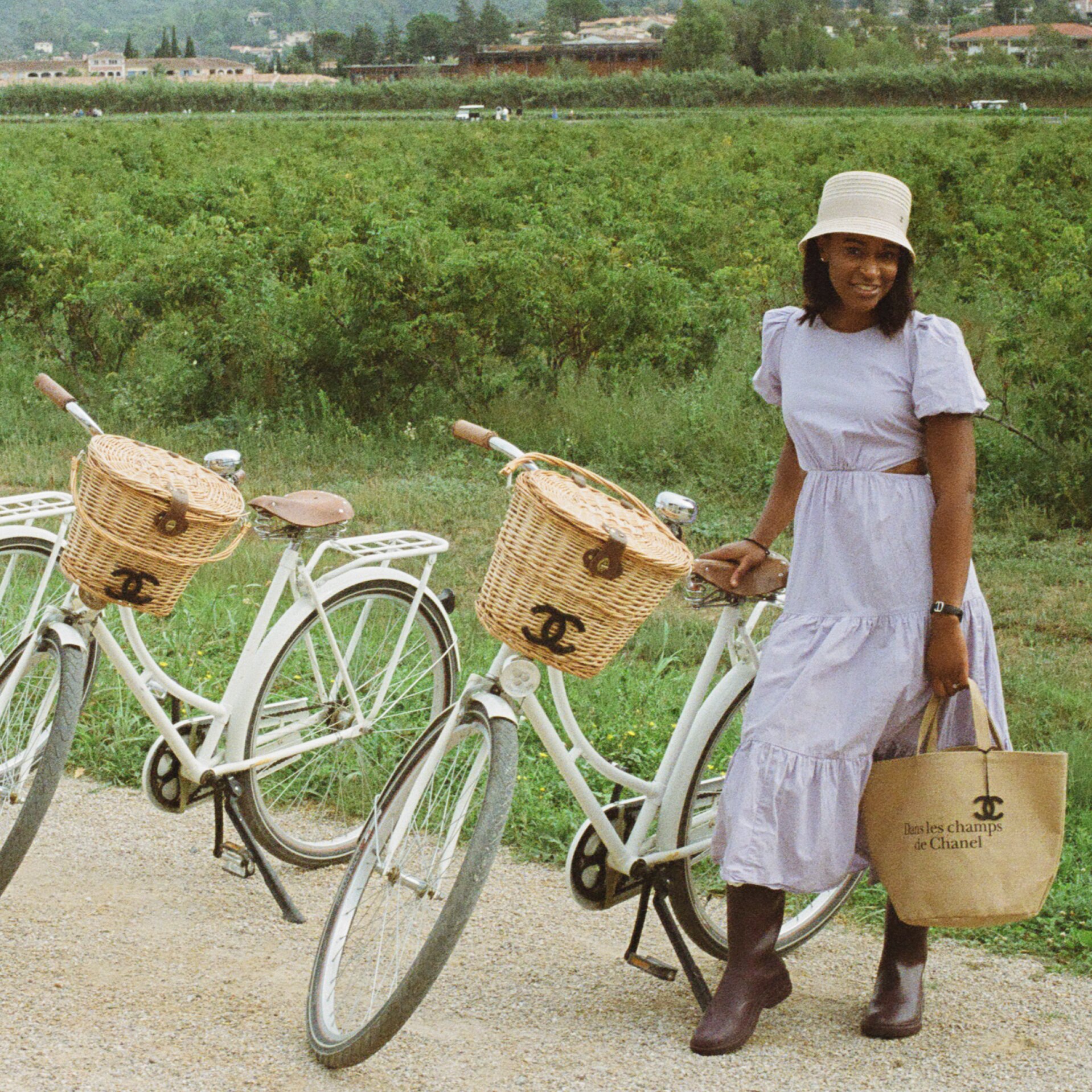
Fashion designer Gabrielle "Coco" Chanel was onto something when she, in 1921, coined Chanel No. 5 fragrance as the “scent of a modern woman.” Although the fragrance is slightly over 100 years old, you can walk into any luxury retailer and spot the square bottle or sniff the heady jasmine upon a quick spritz and become alive. The scent is iconic. Its composition of ylang-ylang, may rose and sandalwood creates a powdery, feminine celebration. But what has made the brand and the fragrance so victorious? What separates Chanel from other houses that tout themselves as having the best flowers in their fragrance compositions? To learn more, I traveled to Grasse, located on the north hills of Cannes, France to dive into the history of the brand and, more importantly, the jasmine flower, which is at the heart of Chanel No. 5.
“Gabrielle Chanel had this intuition that today seems to be obvious for all of us,” Olivier Polge, current in-house perfume creator told me while walking through the jasmine fields. “She felt she had to express her style or add to something through perfumes. So she met this perfumer who was living in this region and she asked him [to create] her first perfume. She asked him to use the most beautiful raw materials and he did.”
Polge is referencing 1921 when Chanel’s senior perfumer Ernest Beaux opted for jasmine produced in Grasse to make the celebrated fragrance. During this time, the region was a huge supplier of jasmine. But by the 1950s the area became more modernized and real estate grew, as a result, jasmine fields in the area began to diminish. To preserve the supply for the house, in 1987 house perfumer Jacques Poige (Polge’s predecessor and father), developed a partnership with Joseph Mul, who at the time was the region's largest flower producer. The Mul family farms is a five-generation legacy that’s approximately 30 hectares of fields, harvesting not only jasmine, but iris, geranium, and tuberose.

“My father was afraid of not having enough extract to produce No.5 so he found an agreement with the Mul family,” says Polge who became the in-house perfumer in 2015. “The jasmine from Grasse is very special because of its rarity. The jasmine from Grasse is very mild in a good sense.”
Thirty-six years later, the partnership is still strong. Every jasmine flower is exclusively used for the production of Chanel fragrances. And the house insists that by having a factory in the fields, they can monitor the process and pay meticulous attention to the raw materials.
Jasminun grandiflorum, the specific jasmine species used in Chanel No. 5, is harvested between August and October. Between the hours of 7am to 1pm, flower harvester select jasmine petals, placing them in wicker baskets (the flowers will sweat in plastic) to later be weighed. Each gatherer picks 12 ounces of jasmine an hour; two pounds of jasmine is equivalent to 8,000 flowers.
The jasmine from Grasse is very special because of its rarity.
After picking, the gathers bring their wicker baskets to be weighed no more than three hours after their findings. Next, the flowers are sent to the processing plant where they are soaked in extremely high temperatures in a solvent that will later absorb the fragrance.
Once the solvent is evaporated, a thick, brown-colored wax (known as concentrate) is created which houses the very strong fragrance from the flowers. As a reference, two pounds of concrete delivers approximately 19 ounces of jasmine absolute. Next, alcohol is extracted from the concentrate, creating what's known as an absolute. This very concentrated liquid is later used in Chanel No. 5 fragrances.

Although No. 5 is arguably a legacy fragrance, every few years Polge creates a new interpretation, a skill he takes into careful consideration. He also tells me a large part of this job is to take care of the existing fragrances, and that’s not an easy task when flowers are often sourced from gardens around the world—at different times of the year. In January he’ll prepare to receive citrus oil from Italy, and in March he’ll gather orange flowers from Tunisia. “When you use flowers in a perfume, you are expressing a very complex and elaborate scent,” Polge tells me as I smell No.5 Eau Première, the 2008 iteration of No. 5. that’s loaded with ylang-ylang to offer a warmer feel than the original fragrance. “Flowers are very precious because they are very hard to harvest, the yield is very low.”
One thing is certain: Polge is up for the challenge to continue to brand's heritage. And when he thinks about crafting new perfumes, he get excited with the idea of scents that resonate with his style, while imagining something that doesn't exist. “I think that's very interesting,” he notes.
And interesting is exactly what "Coco" Chanel would want.







